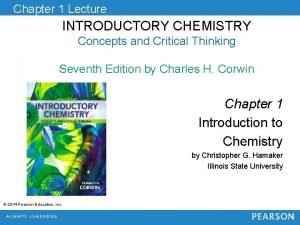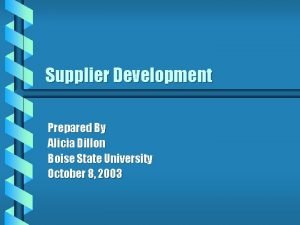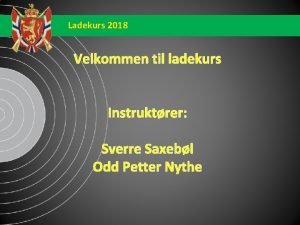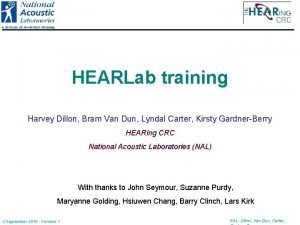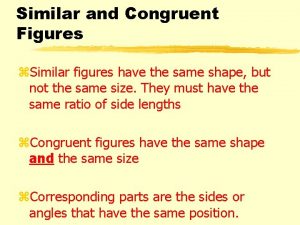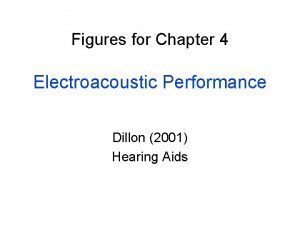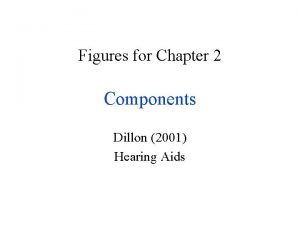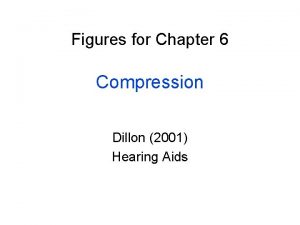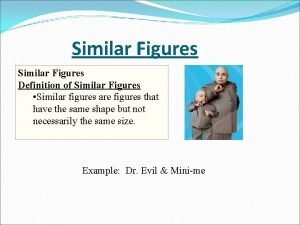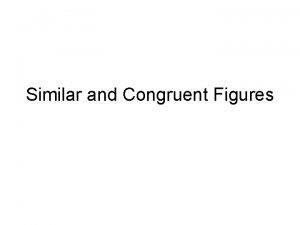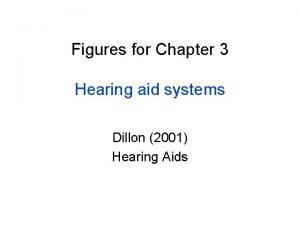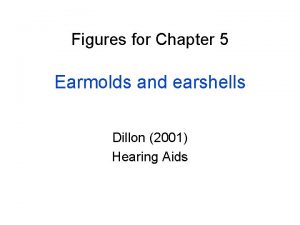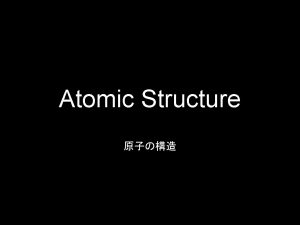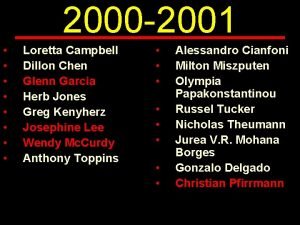Figures for Chapter 1 Introductory concepts Dillon 2001














- Slides: 14

Figures for Chapter 1 Introductory concepts Dillon (2001) Hearing Aids

Audibility of formants First formant Second formant Sound level oo ee 250 500 1000 2000 4000 Frequency (Hz) Figure 1. 1 Similarity of the two vowels oo and ee when the second formant is inaudible because of hearing loss (grey area). Source: Dillon (2001): Hearing Aids

Too loud Intense Reduced dynamic range Moderate Weak Too soft (a) Norm Too loud Intense Moderate Weak (b) Too soft (c) Too soft Sam Figure 1. 2 The relationship between the dynamic range of sounds in the environment and the dynamic range of hearing for: (a) normal hearing, (b) sensorineural hearing loss without amplification, and (c) sensorineural hearing loss with a constant amount of amplification for all input levels. Source: Dillon (2001): Hearing Aids

Reduced spectral resolution Sound level (a) 250 1000 4000 Excitation (b) 250 Frequency (Hz) Figure 1. 3 (a) Sound spectrum, and (b) representation in the auditory system for normal hearing (dotted line) and sensorineural hearing impairment (solid line). Source: Dillon (2001): Hearing Aids

I-O diagram Figure 1. 4 Input-output diagram for a hearing aid with 20 d. B gain, showing how the output SPL depends on the input SPL, for a particular signal or frequency. Source: Dillon (2001): Hearing Aids

Gain-frequency response Figure 1. 5 Gain-frequency response of an in-the-ear hearing aid at maximum volume control position (solid line) and reduced volume control position (broken line). Source: Dillon (2001): Hearing Aids

SSPL or OSPL 90 Figure 1. 6 Saturated sound pressure level frequency response of an in-the-ear hearing aid. Source: Dillon (2001): Hearing Aids

Photo has been removed to minimize file size. Figure 1. 7 A BTE hearing aid. Source: Dillon (2001): Hearing Aids

Photo has been removed to minimize file size. Figure 1. 8 An ITE, an ITC and a CIC hearing aid. Source: Dillon (2001): Hearing Aids

Volume control Microphone Receiver Component location Battery Fitter control Vent Microphone Volume control Fitter controls Receiver Ear-hook Switch Amplifier Battery Figure 1. 9 The typical location of components in an ITC and a BTE hearing aid. Source: Dillon (2001): Hearing Aids

Spectacle aids Photo has been removed to minimize file size. Figure 1. 10 Spectacle adapter system showing two different adapters and BTE hearing aids, an earmold, and a spectacle bow. The bow would be cut at the white line and the left half inserted in the adapter.

Acoustic hearing aids Figure 1. 11 Three acoustic era instruments: (a) The Auricle, (b) the horn, and (c) the speaking tube. Photo has been removed to minimize file size.

Carbon aid Photo has been removed to minimize file size. Figure 1. 12 A carbon aid (The Acousticon) without its battery.

Vacuum-tube aid Photo has been removed to minimize file size. Figure 1. 13 A relatively late vacuum tube hearing aid, with its two separate batteries. Source: Dillon (2001): Hearing Aids
 Introductory chemistry concepts and critical thinking
Introductory chemistry concepts and critical thinking Alicia dillon
Alicia dillon Dillon's rule
Dillon's rule Aoife dillon
Aoife dillon Dillon rule
Dillon rule Dillon's rule
Dillon's rule Alzheimer's disease punnett square
Alzheimer's disease punnett square Aboriginal art symbols and meanings
Aboriginal art symbols and meanings Fred dillon
Fred dillon Hylsetrommel
Hylsetrommel Bram van dun
Bram van dun Patrick dillon panama
Patrick dillon panama William dillon leetch
William dillon leetch Are all congruent figures similar
Are all congruent figures similar Flat shape with eight sides
Flat shape with eight sides
